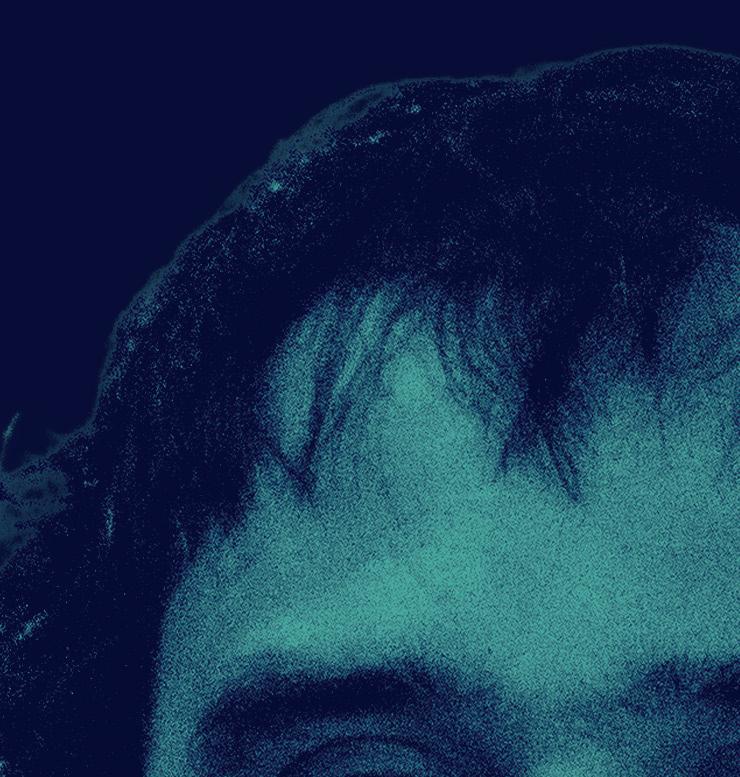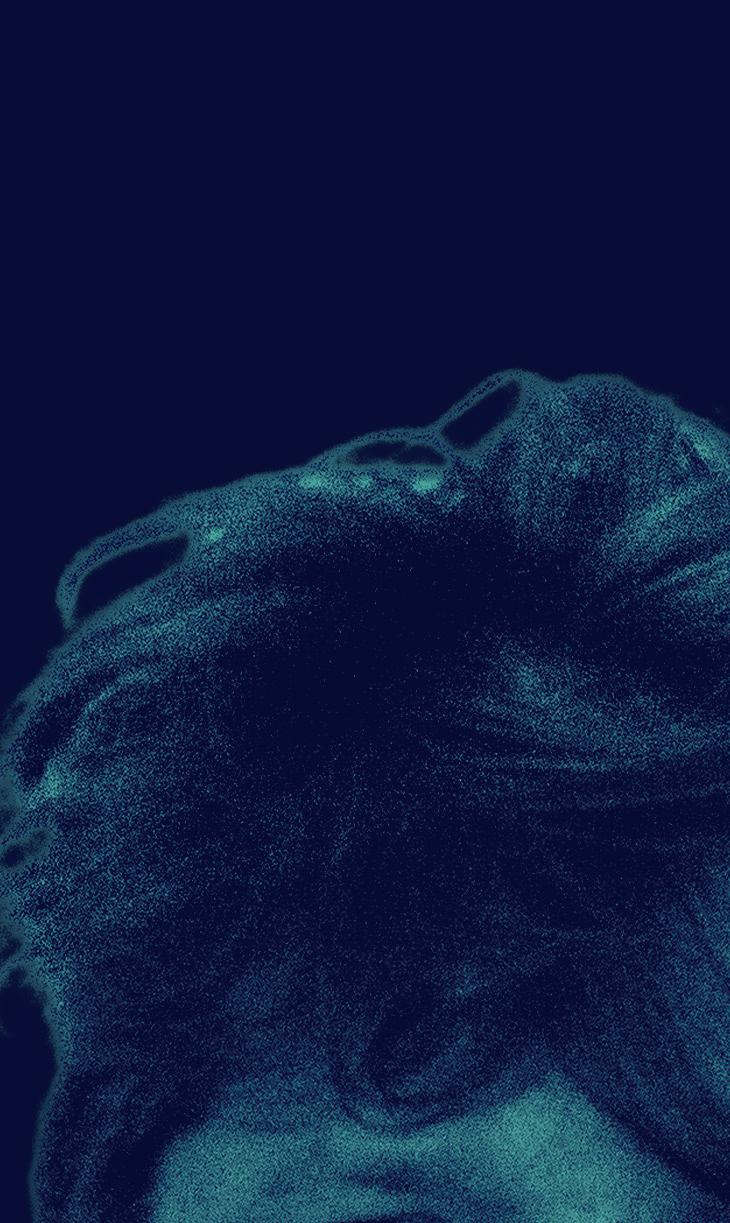
9 minute read
Edwin Gardner & Christiaan Fruneaux / de Chrononauten
DCFA Fellows
© Edwin Gardner & Christiaan Fruneaux
Advertisement




Building Trust in the Electric Age
de Chrononauten Futurologists & authors Atlas of the Long Now
Humans used to put their trust in the spoken word, and later, the written word. But DCFA Fellows Edwin Gardner and Christiaan Fruneaux from de Chrononauten note: both institutional and interpersonal trust are rapidly deteriorating. The dawn of the digital age requires redesign.
“Every kind of peaceful cooperation among men is primarily based on mutual trust and only secondarily on institutions such as courts of justice and police.” Albert Einstein
On November 17th, 2021, a US court sentenced Jacob Chansley – also known as the ‘QAnon Shaman’ – to 41 months in prison for his role in the storming of the US Capitol on January 6th, 2020. Images of Chansley in the Capitol building went viral because of his ‘barbaric’ outfit. His painted face, large spear and horned fur hat became symbolic for the mayhem of that day. For this reason, Chansely’s sentence was extra harsh, as he set an example for the rowdy online communities that stormed the Capitol. According to the judge who sentenced him, Chansely frequently posted “vitriolic messages on social media, encouraging his thousands of followers to expose corrupt politicians, to ID the traitors in the government, to halt their agenda, to stop the steal, and end the deep state” prior to his storming of the Capitol.
Chansley’s story and the events on January 6th became emblematic of a sharp deterioration of societal trust in Western societies during the last thirty years. His messages on social media are testimony of a widening and deepening social mistrust in our democratic and governmental institutions and the officials, professionals and experts that make it run. This lack of trust is deeply problematic – especially for democratic communities, where citizens have to trust each other to be able to work together peacefully (on an equal footing and a voluntary basis) to get anything done. If we don’t address and fix this trust issue, it will spell the end of our way of life.
Trust is the glue that holds societies and civilizations together. It is the core principle on which all human relationships are built. It is, consequently, also the most sacred principle of effective communication. In that light, it is quite remarkable that the societal dynamics of trust are still poorly understood – especially considering it has been over thirty years since the introduction of the most omnipresent communication platform ever conceived: the Internet. The time has come at which we have to start exploring the mechanics of societal trust, how it is produced, and how it is linked to communication technology. If we become familiar with its dynamics, we might be able to design a way out of our current predicament.
There is a link between societal trust, information technology, community experience and the scale of human cooperation that a particular society is capable of. To understand this link, it is helpful to take a few steps back, zoom out, and look at the introduction of the printing press in the mid-1400s and how it transformed society and made the Modern world possible.
Before the invention of the printing press, the dominant information technology in Europe was the spoken word. This had obvious limitations. To talk to each other, we had to meet up in order to build trust and cooperate effectively. Trust was a very personal affair. The institutions of trust were small villages, family structures, friendships, clans and fealty. Within these institutions, cooperation and division of labour could take place – something that was quite challenging outside of these circles of trust. This dependence on the spoken word made the existence of large communities and economies of scale nearly impossible.
Only if we know the mechanics of trust, we can draw up design principles for producing it.
With the invention of the printing press and the subsequent proliferation of publishing houses, Europe was introduced to a powerful new information technology – the printed word. The mass production of information that became possible allowed communities of trust to grow beyond the circle of personal acquaintance. Trust became a more abstract experience. People started to rely on the printed word – study books, banknotes, newspapers, law texts, land maps and nautical charts. A new architecture of trust was built on the presumed objectivity of experts, professionals and their bureaucracies, which were associated with the production of this more abstract level of trust. The printing press made information scalable, which made trust scalable, which made the sense of community scalable, which made cooperation scalable.
In the 19th and 20th century we were introduced to another information technology: electronics. This led to new methods of communication – telegraph, radio, telephone, television, and today’s omnipresent personal computer. Especially after the introduction of the World Wide Web and other Internet applications, the dominant medium of trust shifted again. Although the spoken word and the printed word are still around and have their place in society, the dominant information technology became the activated word. (We chose this term because computer code does not need humans to get work done – think robotics and machine learning.) But while the dominant medium shifted from the printing press towards the new electronic realm, as of yet there are no new architectures of trust in place to instill an even more abstract level of trust into its users. This absence undermines our sense of community and, if we don’t fix it soon, our ability to cooperate.
If we want to learn anything from this very brief history of trust, we need some sort of formula (or taxonomy, or definition) that establishes the social mechanics of trust. Because only if we know its mechanics, we can draw up design principles for producing trust in the electronic age.
So, to move forward, we think that we can safely define the social space where the linking of societal trust, information technology, sense of community and scale of human cooperation happens as a public sphere. Or, to put it all into a single definition:
A public sphere produces public trust by imbuing information technology with a measure of objectivity – a notion of truth that is independent from human subjectivity. This measure of objectivity is called the architecture of trust. It enables the alignment of individual norms, identities, and interests into a sense of common ownership which provides the safety needed for people to cooperate.
Looking back with this formula in mind it makes sense that in the age of the spoken word, people tried to establish some measure of objectivity by getting to know each other. By knowing each other’s subjectivities, one could, with some human insight, perhaps deduce some objective truth. That this is difficult speaks from the fact that these people lived in a highly subjective universe. Their world view was very magical, their world mysteriously animated or otherwise divinely inspired.
When the printed word entered the scene, people slowly started to trust law books, banknotes, land maps and sea charts, because they trusted the craftsmanship of the people (and their institutions) that produced these printed artifacts. From this trusted craftsmanship, slowly,
the notion of professionalism emerged. Professionalism is a work ethic that encourages workers to leave their subjectivity at home and become an objective ‘cog in the machine’. We trust our doctors, lawyers, bookkeepers, politicians, cartographers and teachers, because we trust their objectivity. Professionalism was the architecture of trust in the age of the printed word, and bureaucracies were its scaled-up institutions.
Jacob Chansley’s rants about corrupt politicians and the deep state make much more sense now. Professionalism was the architecture of trust that worked in the printed age. With the advent of a new information technology, the activated word, our faith in human professionalism is waning. Our (subjective) belief in the objectivity of experts and professionals does not cut it anymore. We need something stronger, something more objective. We need an architecture of trust that can withstand the massive challenges of the activated word.
We live in a transitional moment. We are still governed by the institutions that emerged in the age of the printed word, but most of our information and communication takes place in the realm of the activated word. This is a fraught situation, because the dynamics of the printed age are different from those of the electronic age.
Here are a couple of those differences: 1. The electronic realm processes exorbitantly more information than the printed realm. 2. In contrast to the printed realm, the electronic realm does not only distribute information, but also produces it. 3. Because it is activated, the electronic realm can control the robotic workings of critical infrastructure, like power grids, waterworks and traffic lights. 4. In the electronic realm, everybody is a producer of information, which is different from the printed realm, which was controlled by an elite cadre of professionals. 5. The electronic realm makes society much more transparent, because everybody can disclose information in it. There is no ballotage of professional editors, curators, and publishers. 6. Compared with the printed realm, the electronic realm is a ridiculously complex and abstract place. It is built and governed in the language of higher mathematics, which makes its inner workings inaccessible to most.
We thus need to design a new architecture of trust that fortifies a much higher level of objectivity within the activated word, so that it can produce public trust, on which new (more democratic) communities and new (more democratic) ways of human cooperation can be established. This is not something that must be done overnight – the stakes are too high. Like professionalism became the foundation for our current representative democracy — in which a buffer of professional politicians had our backs — and the many professional bureaucracies (corporate, governmental or otherwise) ensure accountability and durability, this new architecture of trust will become the foundation of our future society. For the establishment of an inclusive and sustainable way of life, thinking about the future of trust is key. CURIOUS FOR MORE?
Watch the launch episode of the DCFA Fellowship with de Chrononauten on Architectures of Trust .
BOOK: AFROFUTURISM
In this primer to the music, literature, and art of Afrofuturism, author Ytasha Womack introduces readers to the burgeoning community of artists creating Afrofuturist works, innovators from the past and the wide range of subjects they explore.
ARTICLE: ‘AFROFUTURISME, DE KUNST VAN HET THUISKOMEN’ De Chrononauten reflect on Afrofuturism in this edition of their newsletter Atlas of the Long.










